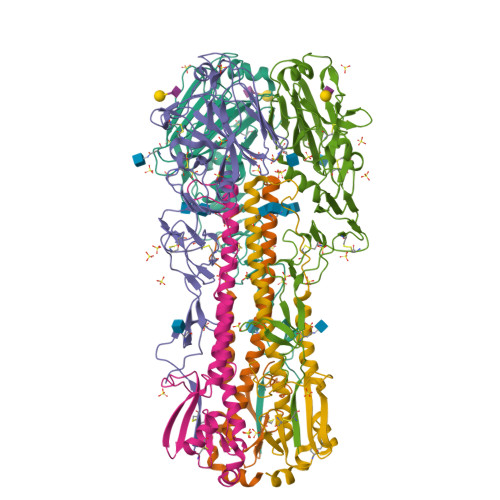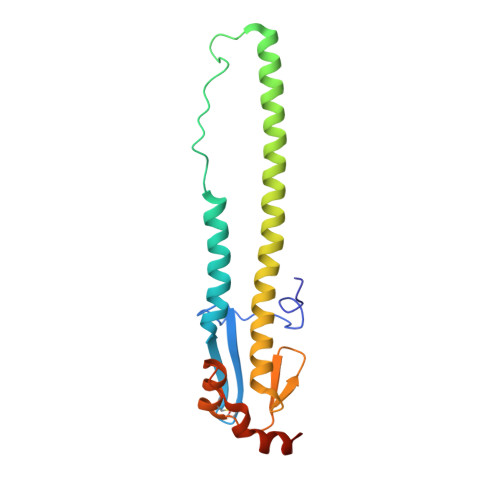Receptor Binding by an H7N9 Influenza Virus from Humans
Xiong, X., Martin, S.R., Haire, L.F., Wharton, S.A., Daniels, R.S., Bennett, M.S., Mccauley, J.W., Collins, P.J., Walker, P.A., Skehel, J.J., Gamblin, S.J.(2013) Nature 499: 496
- PubMed: 23787694
- DOI: https://doi.org/10.1038/nature12372
- Primary Citation of Related Structures:
4BSA, 4BSB, 4BSC, 4BSD, 4BSE, 4BSF, 4BSG, 4BSH, 4BSI - PubMed Abstract:
Of the 132 people known to have been infected with H7N9 influenza viruses in China, 37 died, and many were severely ill. Infection seems to have involved contact with infected poultry. We have examined the receptor-binding properties of this H7N9 virus and compared them with those of an avian H7N3 virus. We find that the human H7 virus has significantly higher affinity for α-2,6-linked sialic acid analogues ('human receptor') than avian H7 while retaining the strong binding to α-2,3-linked sialic acid analogues ('avian receptor') characteristic of avian viruses. The human H7 virus does not, therefore, have the preference for human versus avian receptors characteristic of pandemic viruses. X-ray crystallography of the receptor-binding protein, haemagglutinin (HA), in complex with receptor analogues indicates that both human and avian receptors adopt different conformations when bound to human H7 HA than they do when bound to avian H7 HA. Human receptor bound to human H7 HA exits the binding site in a different direction to that seen in complexes formed by HAs from pandemic viruses and from an aerosol-transmissible H5 mutant. The human-receptor-binding properties of human H7 probably arise from the introduction of two bulky hydrophobic residues by the substitutions Gln226Leu and Gly186Val. The former is shared with the 1957 H2 and 1968 H3 pandemic viruses and with the aerosol-transmissible H5 mutant. We conclude that the human H7 virus has acquired some of the receptor-binding characteristics that are typical of pandemic viruses, but its retained preference for avian receptor may restrict its further evolution towards a virus that could transmit efficiently between humans, perhaps by binding to avian-receptor-rich mucins in the human respiratory tract rather than to cellular receptors.
Organizational Affiliation:
MRC National Institute for Medical Research, The Ridgeway, Mill Hill, London NW71AA, UK.























